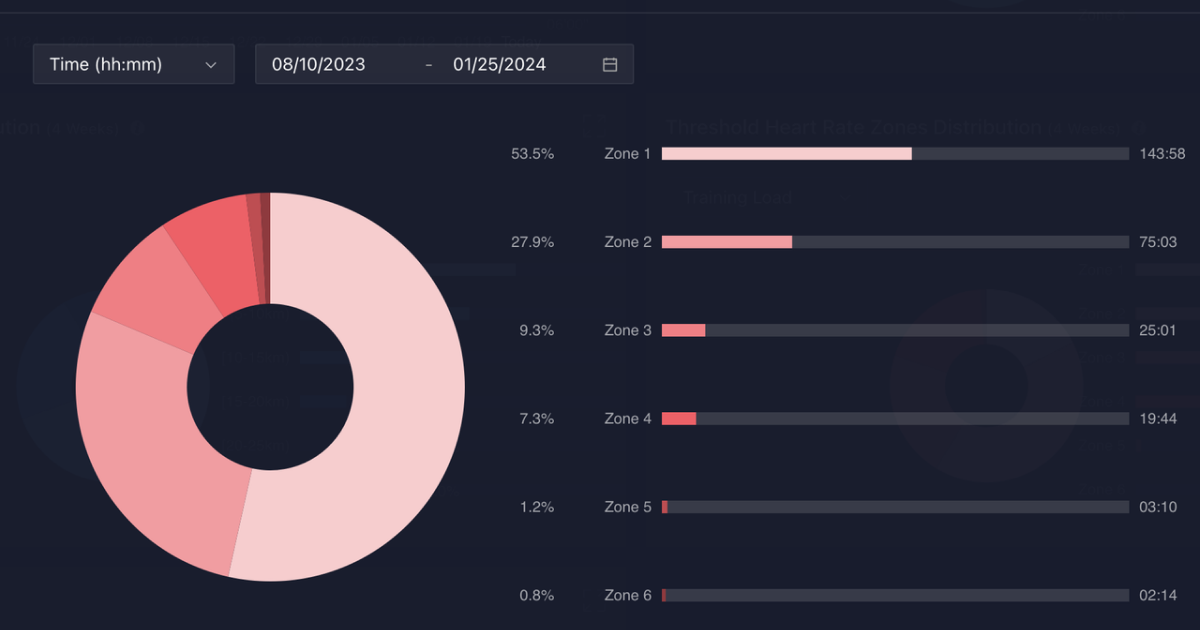For runners, it's all about striking the right balance between pushing your limits and using smart training methods. Training hard and training smart go hand in hand and can help improve your running performance significantly.
COROS Coaches explore why running based on heart rate and time is beneficial for runners to avoid hitting a plateau and achieve their training goals.
Why is Interval Training Better Than Steady Pace Training?
To avoid hitting plateaus early on in your training, it's important to introduce variety into your workouts. This means altering the types of exercises, adjusting intensity levels, and varying workout durations. By doing so, you can consistently challenge your body in different ways and continue making progress.
HIIT or High-Intensity Interval Training is a type of workout involving short bursts (for example 1-10 minutes) of intense exercise followed by brief rest periods or low-intensity exercise. Here are a few benefits to these types of workouts, especially for those newer to running:
- Improves foundational parameters, such as VO2max and Threshold Pace, which can be found in the EvoLab section of the COROS Training Hub.
- Improves your ability to recover faster after more strenuous exercise bouts.
- Lowers the risk of injury due to reduced repetitive stress, built-in recovery periods, and controlled intensity.
- Heart Rate and time-based interval training can be customized to fit different fitness levels and goals.
If you are not sure what heart rate zones to target to reach your training goals, check out COROS Coaches recent blog to learn more- COROS Heart Rate Zones: The Ultimate Guide

Heart Rate Training Zones are found in your Training Hub settings.
Where does your plateau come from? Many novice runners will naturally pace themselves within a comfortably hard zone (Aerobic Power in COROS' Lactate Threshold HR Zone). Although it can provide great cardiovascular benefits at first, runners can quickly plateau if focusing on this intensity too often. This is why we suggest a low-high intensity distribution as mentioned above for athletes who wish to break their plateau and improve their overall fitness.
The Workout
Instead of focusing solely on distance, time-based training provides a structured way to improve endurance and speed over time. Some examples of time-based training are intervals, tempo runs, and fartleks.
Here is a 1-hour interval workout that you can download from our COROS Workout Library:
- Interval Run: The goal is to challenge your body by pushing it to its limits during intense intervals and then allowing it to recover before the next effort. Complete this workout on a track, flat road or the treadmill.

Example of intervals from the workout.
When switching intensities drastically during HIIT workouts, your HR may take some time to update to your true effort. Wearing our COROS Heart Rate Monitor can help reduce this delay and get the most accurate data possible from your workouts!
COROS Coaches Insights
To ensure you make the most of your workouts and avoid hitting a plateau in your training, it's important to monitor the time you spend in different heart rate zones. Training at each zone has a unique effect on your body and fitness. You can improve base endurance, lactate threshold, or anaerobic endurance by training at associated zones.
For easy tracking of your time in these zones, utilize the Threshold Heart Rate Zone Distribution graph available in your COROS Training Hub. This metric provides a visual representation of your heart rate distribution during workouts, making it simpler to monitor your progress.

Threshold Heart Rate Zones Distribution as seen in COROS Training Hub.
More Questions?
If you have questions about this workout or training questions in general, email us at coach@coros.com, and we will be happy to share insights!

/filters:quality(90)/fit-in/970x750/coros-web-faq/upload/images/99fb43ff1758184be426df05b69e8330.png)





